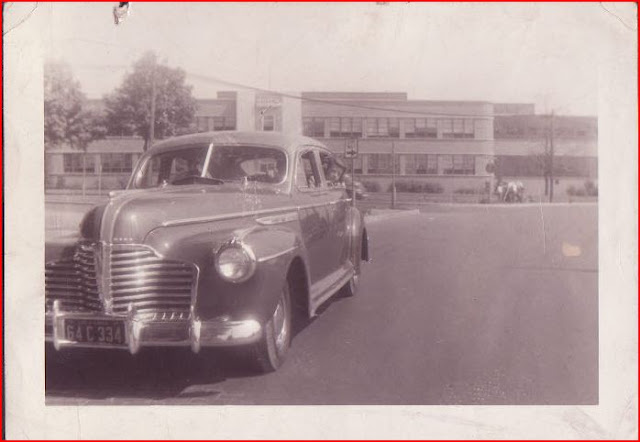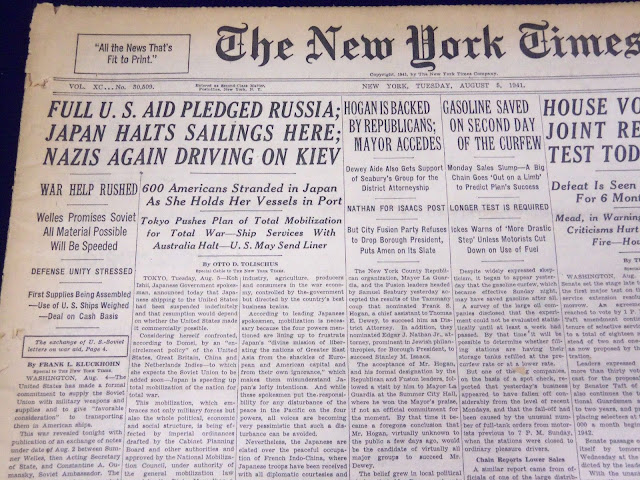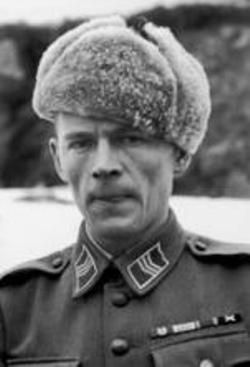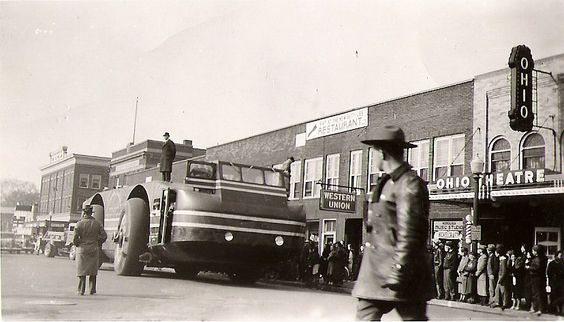Tuesday 5 August 1941
 |
| A Finnish soldier advances past a burning Soviet tank, apparently a BT-7. 5 August 1941 (SA-Kuva). |
In the Far North sector, Finnish troops continue advancing east toward Kestenga and the Murmansk railroad. At Petsamo, Finnish authorities take control of the very valuable Petsamo Nickel Company, a major source of nickel that the Germans badly need.
In the Army Group North sector, German 18th Army (Colonel General Georg von Kuchler) approaches the Narva River and is besieging Tallinn. The Army Group has a line running from Kingisepp running south just east of Staraya Russa and Kholm and then linking up with Army Group Center's 9th Army at Velikiye Luki.
 |
| Soviet troops captured during 1941. |
The German infantry released by the end of Soviet resistance at Smolensk immediately moves forward to replace the 10th Panzer Division and Das Reich Motorized Division at Yelnya. The two German armored divisions are exhausted after having defended this "lightning rod" salient. The Soviets know that Yelnya is a key location because it controls a crossing over the Desna River and an east-west rail station.
General Guderian's Panzer Group 2 continues to battle Soviet 28th Army near Roslavl, which the Germans capture. The Soviets have about 35,000 troops trapped there with little hope of escape.
In the Army Group South sector, Romanian 4th Army (Lieutenant-general Nicolae Ciupercă) and German 11th Army approach the port of Odesa on the Black Sea. Today generally is accepted as the first day of the defense of Odessa. Romanian leader Ion Antonescu has been promised control over the entire region between the Dniester and the Bug rivers, but he has to occupy it first. The Soviets in Odessa have orders to make a last stand there - which means there will be no evacuation by sea. At Kyiv, the Soviet 5th Army counterattacks the German 6th Army with little effect.
After dark, RAF Bomber Command makes a major effort against multiple targets. Results are good, and bomber losses are acceptable to maintain a sustainable bombing offensive.
The RAF sends 65 Wellingtons and 33 Hampden bombers against Mannheim and nearby Ludwigshafen, losing two Wellingtons and one Hampden. The raid is a big success, destroying five businesses and damaging three more (including a celluloid factory hit when a bomber crashes into it). The celluloid factory production is reduced by 75% for 8 days. In addition, 10 houses are destroyed with 572 damaged. In total, 27 people perish and 55 are injured.
The second target of the night is at Karlsruhe. The RAF sends 97 bombers (50 Hampdens, 28 Wellingtons, 11 Halifaxes, and 8 Stirlings) against railway targets. At a cost of one Halifax, one Wellington, and one Hampden, the RAF causes moderate damage in the western Weststadt, Muhlberg, and Rhine Harbor areas. There are 34 people killed.
The third target of the night is at Frankfurt. The RAF sends 68 aircraft (46 Whitleys and 22 Wellingtons), losing 2 Whitleys and one Wellington. While the bomber pilots claim to have hit the target, some bombs fall on Mainz 20 miles away.
In addition, in diversionary raids, RAF Bomber Command sends 13 Wellingtons to Aachen, 8 Wellingtons to Boulogne, and 5 Hampdens on mine-laying off the eastern coast of Denmark. The RAF loses two Wellingtons over Aachen, all of the other raiders return safely.
For the night, RAF Bomber Command flies 289 sorties and loses 11 aircraft. The loss rate of 3.8% is under the 5% threshold usually considered sustainable.
A Lockheed Hudson V9055 crashes at Kaldaðarnes, Iceland when sheep run across the runway during takeoff, collapsing the left landing gear. The ensuing fire causes the depth charges in the Hudson to explode. The crew survives, but a bystander has his left arm cut off by a piece of a propeller blade that flies across the runway.
New Zealand Sergeant J.A. Ward is awarded the Victoria Cross. Ward earned it on the night of 7 July 1941 while serving as a co-pilot in an RAF No. 75 Squadron Vickers Wellington.
 |
| SS Swiftpool, sunk by U-372 on 5 August 1941 while in Convoy SL-81. |
U-372 (Kptlt. Heinz-Joachim Neumann), on its first patrol out of Kiel, torpedoes is in position west of Ireland to attack Convoy SL-81shortly after midnight. At 01:50, Neumann attacks and sinks two British freighters:
- 3136-ton Belgravian (2-3 deaths, 47 survivors)
- 5205-ton Swiftpool (42 deaths, 7 survivors)
U-75 (Kptlt. Helmuth Ringelmann), on its third patrol out of St. Nazaire, then takes his turn to attack Convoy SL-81 at 05:20. Ringelmann fires a spread that sinks two British freighters:
- 4512-ton Cape Rodney (all 35 survive)
- 5415-ton Harlingen (2-3 deaths, 39 survivors)
So, in the span of a few hours, Convoy SL-81 effectively loses five ships totaling about 23,000 tons. U-204 also claims to make a hit on a large ship, but there is no confirmation.
In the far North, German Dornier reconnaissance aircraft shadow Force A off the coast of Norway. Following the disastrous raids on Kirkenes and Petsamo and the desultory results at Spitzbergen, the Admiralty decides that further actions in the region are a bad idea and recalls the force.
Convoy SL-83 departs from Freetown, Sierra Leone bound for Liverpool, Convoy HX-143 departs from Halifax bound for Liverpool.
Royal Navy destroyers HMS Partridge and Lauderdale are launched, and escort carrier Campania is laid down.
Canadian corvette HMCS Amherst and minesweeper Ungava (Lt. Frank K. Ellis) are commissioned.
Greek destroyer Miaoulis (formerly HMS Modbury) is laid down.
 |
| Adolf Hitler during his visit to the Eastern Front, Aug. 5,1941 (Associated Press). |
Operation Guillotine, the British reinforcement of Cyprus, continues. Australian light cruiser Hobart and three destroyers leave Port Said bound for Famagusta. In separate sailings, Australian sloop Parramatta also departs from Port Said escorting freighter Gujarat to Famagusta, while destroyer Kipling proceeds from Port Said to Famagusta as well. Greek destroyer Kondouriotis departs from Alexandria bound for Famagusta carrying torpedoes for the Fleet Air Arm Squadron No. 815.
Destroyers HMS Decoy and Hero make the nightly supply run to Tobruk without incident.
An Axis convoy departs from Naples bound for Tripoli with five freighters.
Axis bombers attack Malta from about 21:38 to about an hour after midnight. The Italians lose at least two Italian BR-20 bombers and possibly a third.
Battle of the Pacific: Troop convoy WS 9AX arrives at Singapore after a long journey from the UK with reinforcements
Special Operations: Secret Intelligence Service (SIS aka MI6) agent Bradley Davis parachutes into France to join the Alliance Réseau (network) partisan organization as a radio operator. He later turns into a double agent working on behalf of the Germans.
Partisans: General Alessandro Pirzio Biroli, under orders from Mussolini to suppress the ongoing uprising in Montenegro "at whatever cost," issues an order to the local population to surrender all firearms. Biroli makes plans to launch an Italian counter-offensive, the first by Axis troops against partisans in Yugoslavia or apparently anywhere else. He has six divisions with a total of 70,000 troops.
 |
| The U.S. heavy cruiser USS Northampton (CA-26) entering the river at Brisbane, Australia, on 5 August 1941. Note her false bow wave Camouflage Measure 5 on Camouflage Measure 1. She carries one of the early CXAM radars on her mainmast (Naval History and Heritage Command NH 94596). |
Anglo/Vichy French Relations: The British imprison Vichy French General Dentz, former commander of French forces in the Levant. They refuse to release him until all Allied troops captured in the Levant and then spirited away to metropolitan France are returned and released.
US/Australian Relations: US heavy cruisers USS Northampton and Salt Lake City arrive at Brisbane, Australia on the first stop of a goodwill tour.
 |
| This photo with the lady in the car is from August 5th, 1941. You are facing north with Buick parts and service #84 in the background (Buick City News). |
Anglo/US/Japanese Relations: Japanese merchants make purchases of gasoline from the stores of three foreign oil companies on Tainan. This is in technical violation of the US oil embargo on Japan. The Japanese take the chance that this will anger the Americans and permit the purchases under strict supervision. Oil supplies already are running tight in some areas of the Japanese sphere of influence.
At Tsingtao, China, Japanese authorities clamp down on American and British companies. The Japanese impose various sanctions, and in effect place receivers in control of the businesses who have the final say on all decisions. No ownership interest may be transferred without Japanese approval, and the Japanese decide on the distribution of profits.
The Japanese learn that the US, British, and Chinese are planning to build a military road through Darjeeling, Tibet, and Seita in order to supply the Nationalist government in Chungking, with engineering material already being assembled and prepared in the United States.
 |
| A German death card for a soldier killed during the fighting of 5 August 1941. |
Japanese Military: The Imperial Japanese Army considers attacking northward and seizing the trans-Siberian railroad in order to stop US lend-lease shipments. The issue apparently arises from a suggestion by the Japanese Ambassador in Rome, who thinks it best to help eliminate the Soviet Union before it can combine with the Americans in a general war. However, the Japanese high command decides that it would be wiser to not provoke the Soviets and Americans and let the matter drop without approval.
 |
| No. 3 Bombing and Gunnery School trainees from Sydney, Australia, MacDonald, Manitoba July 6 - August 5, 1941. |
US Government: Presidential yacht USS Potomac (AG-35) pulls alongside heavy cruiser Augusta (CA-31) at Menemsha Bight, Vineyard Sound, Massachusetts at 05:30. President Roosevelt and his advisers on board the cruiser, which embarks at 06:17 to cross north through the Cape Cod Canal. Press dispatches pretend that Roosevelt remains on board the Potomac (an elaborate ruse is implemented with a Roosevelt double remaining on the yacht) while the Augusta and accompanying cruiser Tuscaloosa (CA-37) continues north toward Canada.
Vice-Premier adds control over France's North Africa colonies in Tunisia, Algeria, and Morocco to his resume. General Weygand is his deputy. The Germans are not fond of Weygand, who is opposed to German use of Vichy French ports and bases in North Africa.
 |
| Westmount, Quebec train station, 5 August 1941 (Old Time Trains, Bud Laws Collection). |
Holocaust: The Germans begin liquidations of Jews in Pinsk, which they occupied on 4 July. About 8000 Jewish men, including 20 members of the Judenrat, are ordered to repair a railroad track. However, they are marched to pits outside of town and executed. Over the next few days, the death total climbs to about 10-11,000.
French Homefront: Vichy limits wine consumption to two liters per person per week.
 |
| John F. Kennedy ca. 1939. |
John F. Kennedy receives a physical examination by a Navy Medical Board in Boston. John's father, Joe, has sent a letter to Director of Naval Intelligence Captain Alan Kirk pressuring him to accept John. Kirk complies and the board clears Kennedy after barely examining him at all. JFK is now cleared to become a US Naval officer.
 |
| New York Times, 5 August 1941. "Full U.S. Aid Pledged Russia." |
August 1941
August 2, 1941: Uman Encirclement Closes
August 3, 1941: Bishop von Galen Denounces Euthanasia
August 4, 1941: Hitler at the Front
August 5, 1941: Soviets Surrender at Smolensk
August 6, 1941: U-Boats in the Arctic
August 7, 1941: Soviets Bomb Berlin
August 8, 1941: Uman Pocket Captured
August 9, 1941: Atlantic Conference at Placentia Bay
August 10, 1941: Soviet Bombers Mauled Over Berlin
August 11, 1941: Rita Hayworth in Life
August 12, 1941: Atlantic Charter Announced
August 13, 1941: The Soybean Car
August 14, 1941: The Anders Army Formed
August 15, 1941: Himmler at Minsk
August 16, 1941: Stalin's Order No. 270
August 17, 1941: Germans in Novgorod
August 18, 1941: Lili Marleen
August 19, 1941: Convoy OG-71 Destruction
August 20, 1941: Siege of Leningrad Begins
August 21, 1941: Stalin Enraged
August 22, 1941: Germans Take Cherkassy
August 23, 1941: Go to Kiev
August 24, 1941: Finns Surround Viipuri
August 25, 1941: Iran Invaded
August 26, 1941: The Bridge Over the Desna
August 27, 1941: Soviets Evacuate Tallinn
August 28, 1941: Evacuating Soviets Savaged
August 29, 1941: Finns take Viipuri
August 30, 1941: Operation Acid
August 31, 1941: Mannerheim Says No
2020





